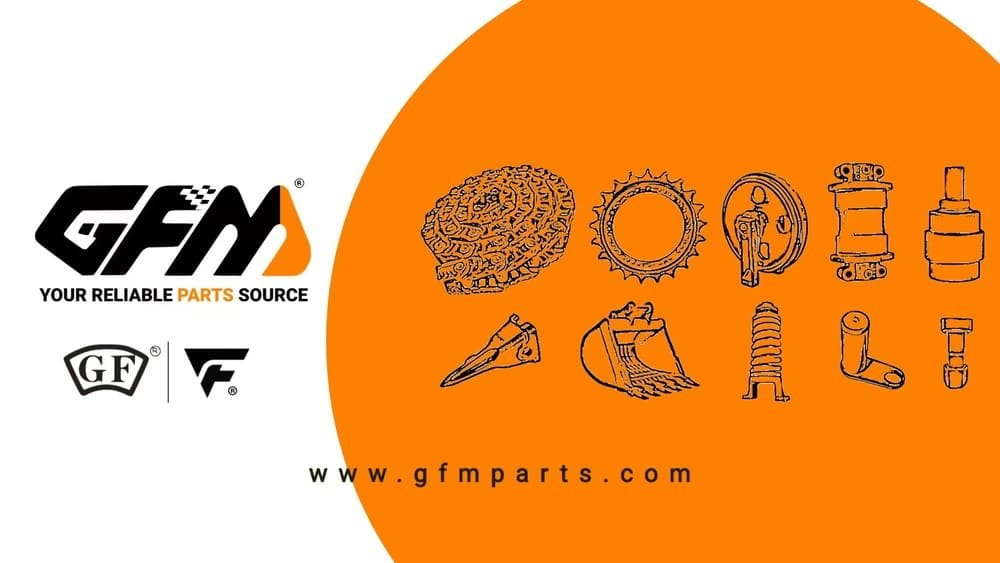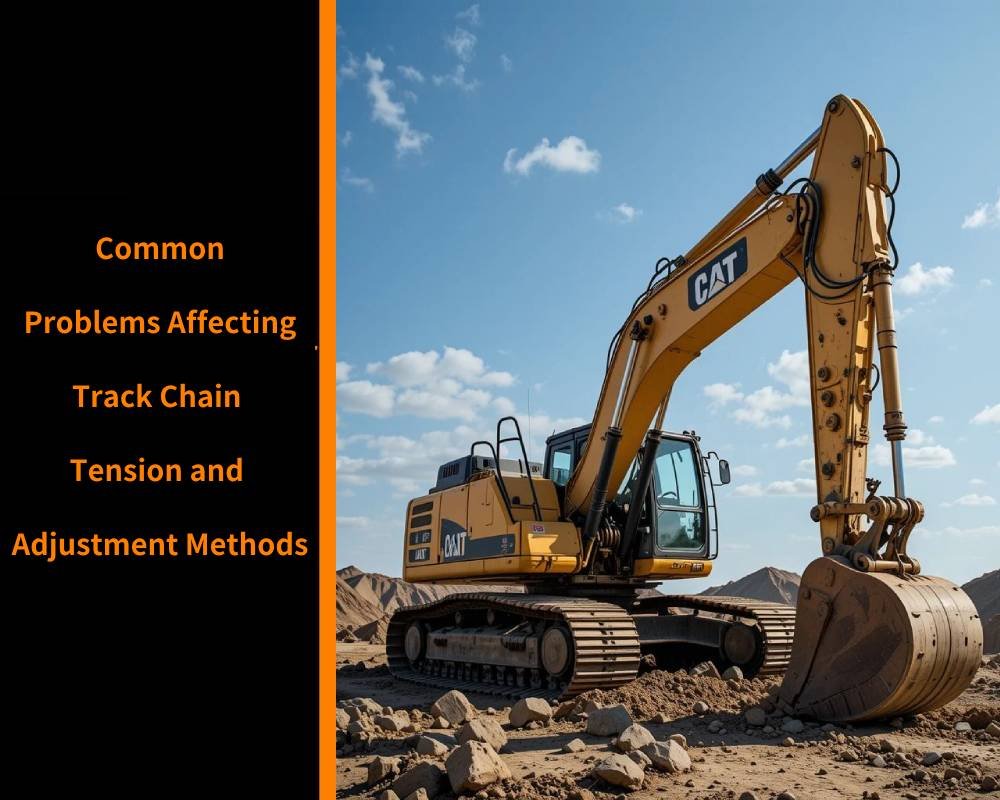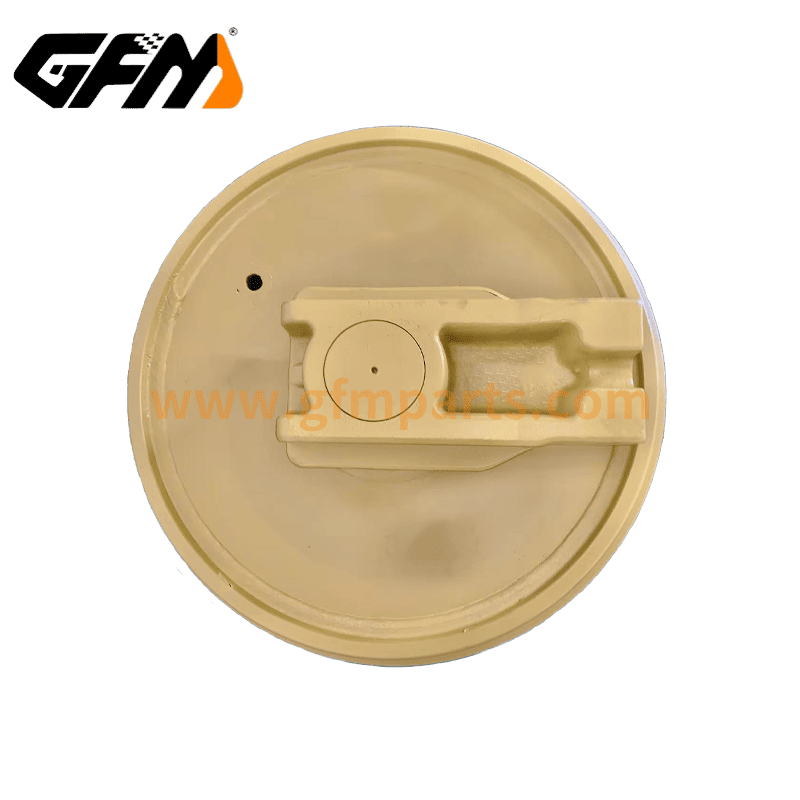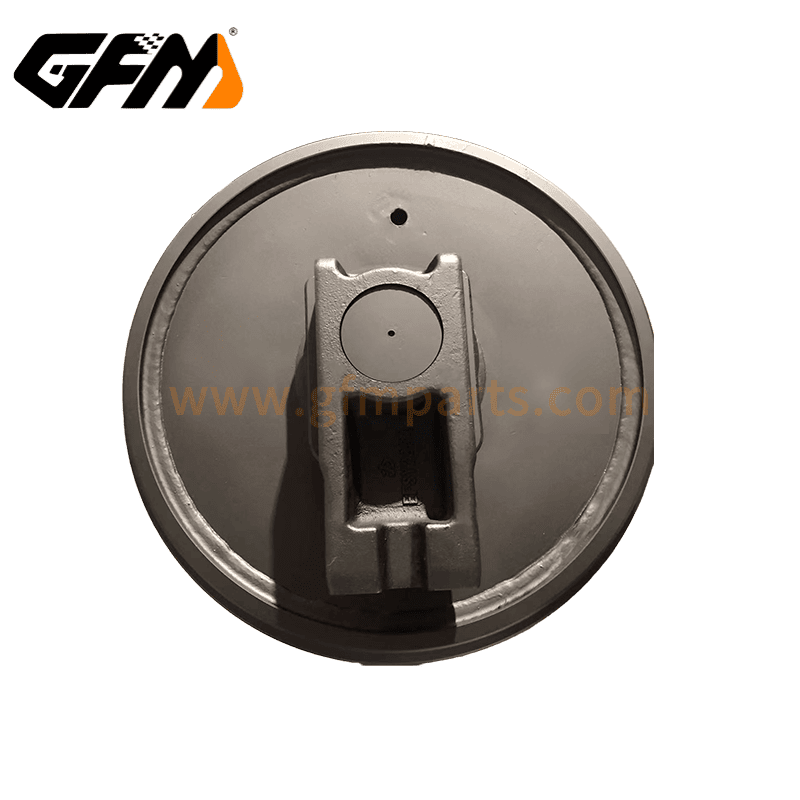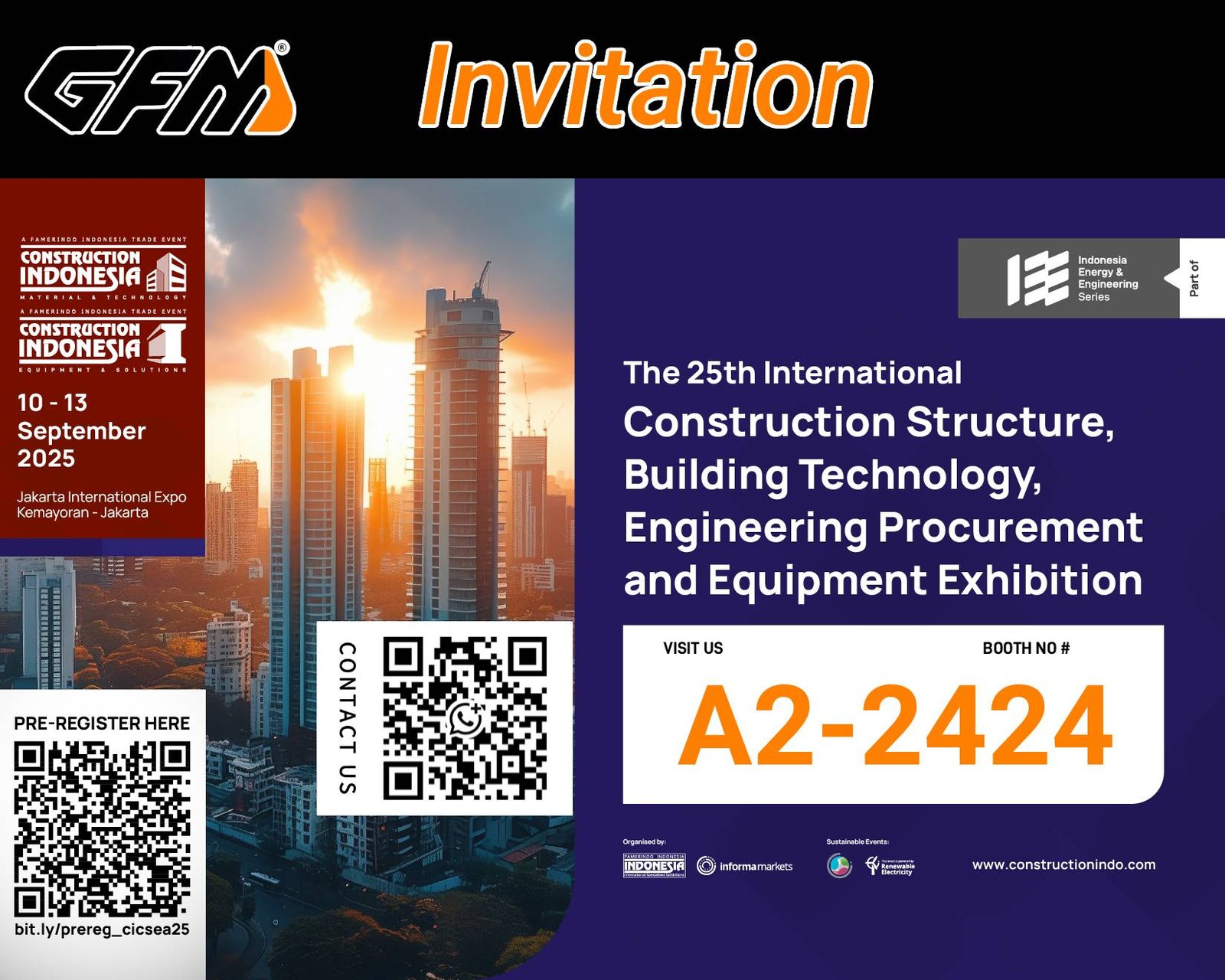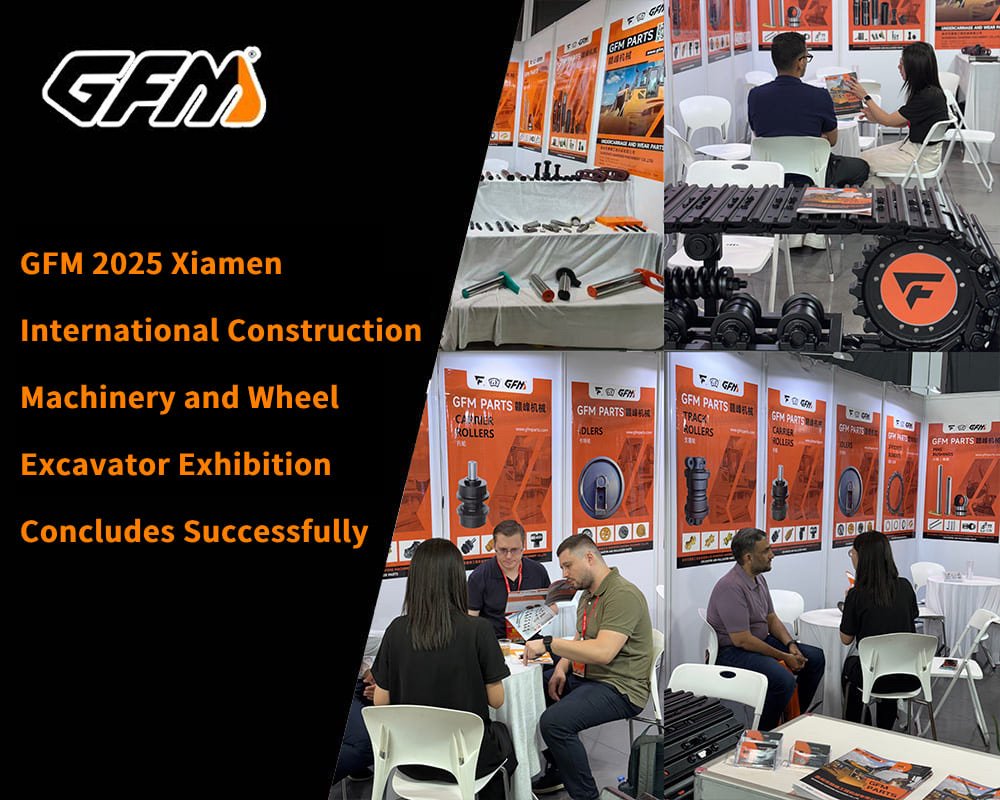Оглавление
- Why Track Chain Tension Is Crucial for Excavator Undercarriage Part
- Common Track Chain Tension Issues and Their Causes
- How to Inspect Excavator Track Chain Tension: Tools and Methods
- Detailed Steps to Adjust Excavator Track Chain Tension
- Professional Tips to Extend the Life of Your Excavator Track Assembly
Why Track Chain Tension Is Crucial for Excavator Undercarriage Part
Track chain tension is a critical parameter in the Запчасти ходовой части экскаватора system, directly impacting the machine’s operational stability, efficiency, and the lifespan of key components. Whether it’s the гусеничная сборка экскаватора or essential parts like the drive sprocket, carrier rollers, and idlers, they all rely on proper tension to work smoothly and in harmony.
The importance of correct track chain tension can be summarized in several key points:
- Preventing Derailment and Misalignment: Overly loose track chains are prone to derailment, especially during turns, slope operations, or under heavy loads. This can cause the track chain to slip off the sprocket or idler, leading to machine downtime and damage to the undercarriage components.
- Reducing Component Wear: Conversely, excessive tension increases friction between the track chain and rollers, accelerating wear on carrier rollers, track chain links, and seals, ultimately shortening service life.
- Ensuring Efficient Power Transmission: Proper tension helps maintain firm engagement between the drive sprocket and track chain links, preventing slippage and improving traction and operational efficiency.
- Optimizing Fuel Consumption: Adequate tension minimizes track chain resistance, lowering engine load and fuel consumption, thereby enhancing economic efficiency during operation.
- Maintaining Smooth Operation and Safety: Correct tension reduces impacts, vibrations, and lateral sway during machine movement, enhancing operator comfort and ensuring safety on the jobsite.
The typical sag (vertical drop) of the track chain varies by model but generally ranges between 3 to 5 centimeters. It is advisable to consult the specific equipment manufacturer’s manual for exact tension specifications.
In summary, proper track chain tension management extends component life, reduces repair frequency, and ensures smooth and safe machine operation, making it an essential part of routine maintenance.
Common Track Chain Tension Issues and Their Causes
- Terrain and Environmental Factors: Different operating conditions significantly affect track chain tension. For instance, muddy environments cause mud buildup inside the track chain, hindering the tensioning mechanism and reducing tension. Meanwhile, sandy or rocky terrain accelerates chain wear, upsetting tension balance.
- Operator Habits and Workload: Frequent sharp turns, prolonged uneven loading, climbing slopes, or high-speed travel can stretch the track chain over time, resulting in decreased tension. Intense work cycles also accelerate lubricant loss or compression, impairing tension system performance.
- Aging of the Tensioning Device: With extended use, seals inside the tensioning cylinder may degrade or fail, causing lubricant leaks. This results in idler wheel retraction and slack track chain unable to maintain the intended tension.
- Initial Stretching of New Track Chains: New track chains naturally stretch during the initial break-in period. Failure to adjust tension promptly can cause poor engagement between track chain links and drive sprockets, increasing component wear.
If these issues go unaddressed, they directly impact the performance of the excavator track assembly and overall undercarriage stability.
How to Inspect Excavator Track Chain Tension: Tools and Methods
Track chain tension inspection is a fundamental maintenance task, with several practical methods suitable for fieldwork:
Common Inspection Tools
- Straightedge and Wooden Board Method: Measure the sag at the middle of the track chain to determine if it falls within an acceptable range.
- Track Gauge: Measures clearance between the chain and idler wheel.
- Electronic Tension Meters: Provide precise tension readings, ideal for scheduled maintenance on large machines.
Standards for Measurement
For most medium-sized excavators, track chain sag should be maintained between 30 and 50 mm. Smaller machines may have lower values, and large mining equipment slightly higher. Always combine manufacturer recommendations with actual working conditions to make informed judgments.
Inspection Frequency
- Under normal operating conditions, it’s advisable to inspect track chain tension every 50 working hours.
- In harsh environments or during the initial use of new track chains, daily inspections are recommended with timely adjustments as needed.
Regular inspection frequency greatly reduces the risk of unexpected failures and supports comprehensive maintenance records.
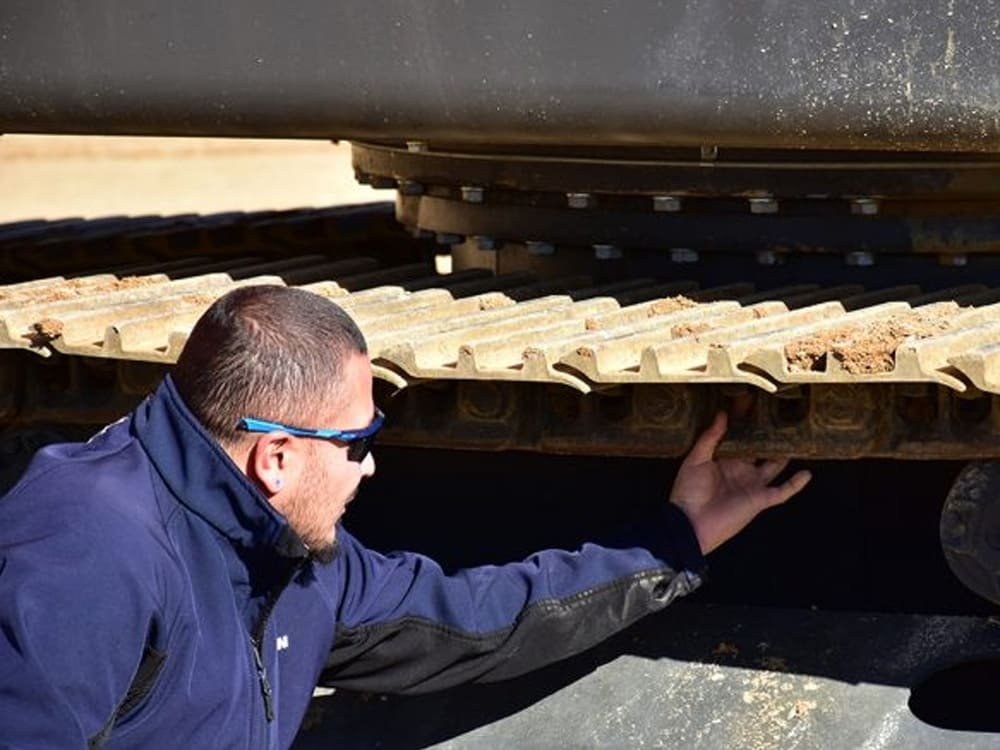
Detailed Steps to Adjust Excavator Track Chain Tension
Preparation Before Adjustment
- Park the machine on firm, level ground and shut off the engine to ensure safety.
- Use the control system to raise one side of the track chain off the ground.
- Clean mud and debris near the tensioning mechanism to avoid interference during adjustment.
Adjustment Process (Grease-type Tensioner)
- Locate the grease fitting: Usually found near the idler wheel inside the track frame.
- Tighten the track chain: Use a grease gun to inject grease into the fitting, pushing the idler forward and tightening the track chain.
- Loosen the track chain: To reduce tension, open the grease release valve to let out some grease, allowing the idler to retract and slacken the track chain.
- Check tension: After finishing, measure the sag at the track chain midpoint to confirm it meets standards.
Special Notes
- Spring-type tensioners: Usually self-adjusting but may lose tension over time due to spring fatigue.
- Hydraulic tensioners: Found in some modern excavators, requiring professional servicing.
Recheck After Adjustment
- Measure the track chain sag again to verify proper tension.
- Ensure grease fittings are securely closed to prevent leakage.
- Observe the idler’s position for stability and eliminate risks of backward movement.
Safety Reminders
- Never stand in front of the idler wheel during tensioning to avoid injury from sudden movement.
- Use proper tools; avoid hammering or improper handling that could damage the tension system.
Professional Tips to Extend the Life of Your Excavator Track Assembly
Daily Maintenance Focus
- Clean the track chain system after every workday, paying special attention to debris trapped between carrier rollers and track chain links.
- In wet seasons or soft ground, inspect tension daily and adjust as necessary.
- Maintain detailed records of tension checks, adjustment times, and component conditions.
Good Operating Habits
- Avoid prolonged stationary turning, sudden acceleration, or continuous high-load operations that accelerate track chain wear.
- Maintain controlled driving speed and smooth handling in challenging terrain to minimize mechanical shock.
Choose High-Quality Track Components
Using high-quality гусеничная сборка экскаватора components significantly extends overall machine service life. Opt for products from reputable manufacturers featuring high-strength materials, thorough heat treatment, and rigorous quality control to ensure durability and performance in demanding conditions.
For example, GFM’s excavator track assemblies are made of high-strength manganese steel with multiple heat treatments, delivering high tensile strength and low wear rates, suitable for mining, construction, and road machinery applications.
Seasonal Maintenance Advice
- Winter: Lubricants may thicken under low temperatures; preheat equipment before adjusting tension.
- Summer: High temperatures can increase grease pressure; regularly check cylinders for overheating.
| Получите быструю бесплатную расценку | Электронная почта: henry@gfmparts.com | Вотсап: +86 17705953659 |
Managing track chain tension is one of the most fundamental yet vital aspects of excavator undercarriage parts maintenance. Proper tensioning boosts machine stability, prolongs undercarriage life, and significantly lowers repair costs.
By following recommended inspection schedules, mastering correct adjustment techniques, and using premium parts, operators can improve efficiency and maximize operational safety.
As a trusted manufacturer of excavator undercarriage parts, GFM prioritizes product quality and customer needs, delivering durable, high-performance track assemblies and undercarriage solutions.
